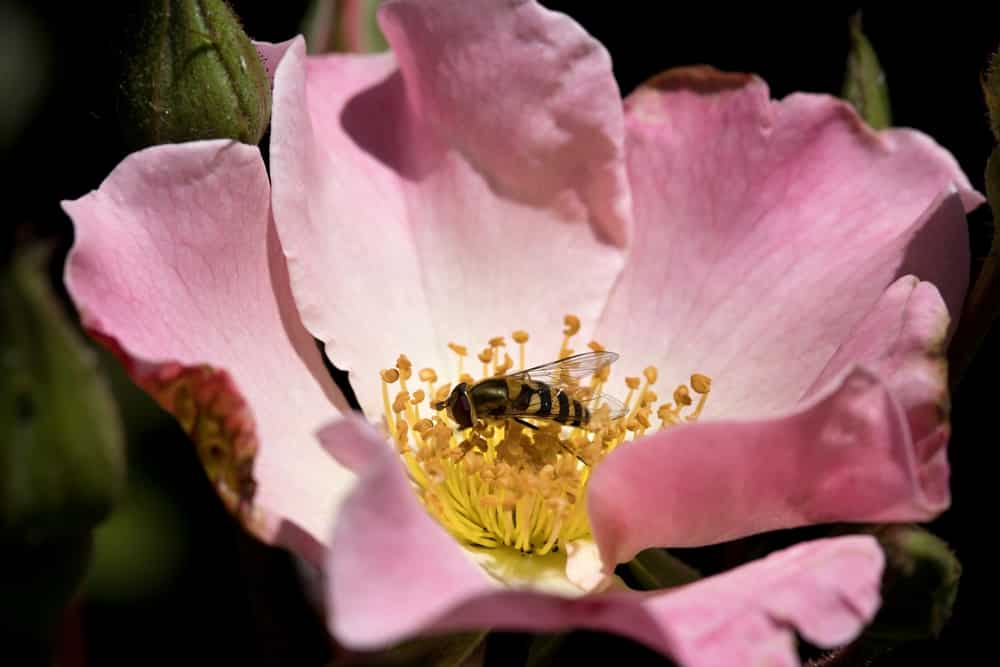You may be familiar with the tiny (yet annoying) hoverflies. These insects look like wasps or bees (because of their yellow and black striped bodies) but are, in fact, flies, as their name suggests. Perhaps you’re wondering how to get rid of hover flies on your patio.
Despite being beneficial insects that might help control the aphids population in your garden, we understand that having them on your patio might not be the most pleasant experience.
And if you want to learn more about how to get rid of hoverflies in your yard, keep reading. Indeed, here we collected all the tips and tricks you can use to enjoy your time in your garden without having to deal with these insects.
How to get rid of hover flies on patio
Hoverflies can be a nuisance in the summer, when they may hover around your food, drink, and you. Indeed, these insects love everything sugar and might stay around your patio if you eat there or have trash cans around. However, it might be worth mentioning that hoverflies won’t harm you. Indeed, they don’t have a stinger, making them harmless insects.
Still, we understand that having them around at all times might not be ideal. So, here are a couple of methods you can use to keep them away from your patio. Try using a combination of the options we include in this list to maximize your chances of success.
However, don’t forget to be patient: you might not see immediate results. But trust us: these solutions will (in the long run) help you have a better time in your garden.
Keep Your Patio Clean
One of the best ways to minimize visits from hoverflies is to make the environment in your yard less attractive to them. And to do so, there isn’t a better way than keeping your patio clean.
Indeed, hoverflies will stay around if there is the food they can eat. So, if you leave leftovers, drinks, or garbage on your patio, these insects will likely decide to lay their eggs on your patio.
On the other hand, keeping the space clean will help you make the area less comfortable for them. In the long run, this will cause hoverflies to look for new homes.
Add a Fan
Something that will also contribute to keeping these insects away is adding a fan. Indeed, these insects won’t like the increased current that will force them to move to a different location. If you don’t want to use too much energy, keep the fan on only if you notice hoverflies and turn it off as they leave. With time, they will understand that your patio is not a place for them.
Set Up A Trap
You can build a trap to kill hoverflies. However, since they are beneficial insects, this might not be the best option, especially if you have crops in your garden or plants susceptible to attacks from aphids. Indeed, hoverflies are excellent biological predators of those bugs.
Still, here is what you need to know about creating a hoverfly trap. You can use a variety of baits, including vinegar, sugar, and even fly tapes. For instance, you can add vinegar and some drops of dish soap to a soda bottle (that you previously cut in half). Then, add a plastic wrap to the container and poke some holes. The flies will find the liquid attractive. However, they will drown in the soap.
You can also do the same with a sugary solution, which hoverflies love. Alternatively, fly tapes contain substances (such as corn oil) that attract flies and entangle them in the paper.
Add Plants with Nectar and Pollen
If you don’t want hoverflies to bother on your patio, you should consider adding plants that will attract them. Doing so will force them to spend less time annoying you. After all, they will be more attracted to the pollen and nectars of the plants and decide not to spend time on the patio.
Make A Repellent
Alternatively, you can make a repellent to prevent hoverflies from considering your patio an attractive place to spend time. Use natural products to minimize harm to your pets or children.
For instance, you can use citronella, lemon, or cloves: these insects hate their smell. Peppermint and rosemary essential oils are also suitable options. Citrus fruit peels work excellently as well: place them strategically where the bugs congregate to maximize their effect.

